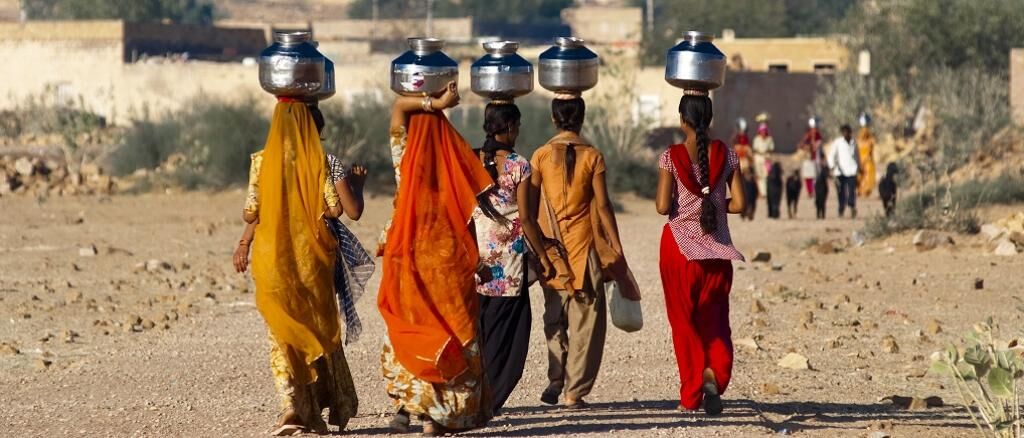Towards a thirsty future?
Exacerbated by water-intensive agriculture, climate change and industrialisation, water scarcity is leading to human rights violation and disrupting social equality

In spite of all the noise and worries about water scarcity and river pollution, we are making things worse. Water is not just a resource for economic growth but is important for the survival of life on this planet. In the 15th century, Akbar left Fatehpur Sikri because of water scarcity. In 2022, we are talking about Indonesia shifting its capital from Jakarta because it is feared that the entire city could sink by 2050, due to recurrent floods.
Water scarcity implies that either the sufficient water is not available (because it does not rain, the water table has gone down or the demands have increased) or is inaccessible (because it is present in snow capped mountains and glaciers, the infrastructure is not appropriate or because of geo-political factors).
As per the WHO estimates, by 2025, approximately half of the global population will be facing acute water shortage. This indicates that water crisis is not the future. It is very much now, and is visible in various forms like water scarcity, water-related disasters, water pollution, waterborne diseases, water conflicts, water distribution and so on and so forth. As per the recent report by the World Resource Institute, India is among the top 20 countries facing severe water stress.
Let us explore the underlying causes.
Take the case of agriculture. While the Green Revolution in the 1960s ushered agricultural productivity, it also led to a surge in ground water digging through borewells. Today, groundwater in northern India is being lost at a rate of 19.2 gigatons per year. India's groundwater usage exceeds that of China and the United States combined. It is mainly because of the extensive cultivation of water-intensive crops. Shift in the preference for protein-based diet, commercial agriculture and faulty agricultural practices aggravate this situation. According to the 2021 Report of the State Ground and Surface Water Resources Data Centre, the groundwater level has dipped considerably in five districts of Tamil Nadu. The situation is the same in other states like Rajasthan, Andhra Pradesh and Maharashtra. Reduced water table, coupled with declining rainfall, and persistent drought-like conditions ring alarming bells on the availability of water in the years to come.
Climate change is another prominent cause behind the reduced water availability. It is quite possible that shrinking Himalayan glaciers may make Ganga and Yamuna seasonal rivers which will flow only during monsoon and not during summers — affecting the food production and lives of the millions of people dependent on these rivers.
Apart from agriculture, population increase, affluent lifestyles and industrialisation also contribute towards the looming water crisis. For example, Shimla receives 20 million tourists every year. It is 10 times the population of the city. Such high influx increases the demand of water and, if this continues, the "Day Zero" will not be far away. We have seen an acute water crisis in the city, especially during summers over the last few years.
Denial of water is a human rights violation as the United Nations General Assembly in 2010 recognised Right to clean and safe water as a human right. In many cases, social elements like race, gender, ethnicity, and socioeconomic status also influence the enjoyment of this human right.
All these issues call for a prioritised action towards working on the underlying causes of this situation. Water conservation needs corrective actions. Urgent, substantial and sustainable reforms are needed in the policies and frameworks directed towards water management, as quick fixes will not work anymore. Tough problems can be handled by tough solutions only. Water management practices in the country need dramatic steps.
All important rivers are interstate and the Centre has no direct control. Conflicts arising thereof are a threat to the harmony in the region. Ministries of Water, Tourism, Health and Family Welfare, Environment, Forest and Climate Change, Urban Development, and Rural Development — which are related to water use and consumption — must come together and work on a common agenda.
We need to recognize that smart and climate-resilient agriculture is an adaptive approach but no human species has evolved which does not need water or will survive without maintaining minimum hygiene standards. Our metabolism, body functions and nutrition — all require clean water in sufficient amounts. Innovations in agriculture and industrial processes are designing water-smart techniques but these are also energy-intensive.
Further, improved access to water through better infrastructure and distribution can foster social equality. Health, nutrition and safety of marginalised communities depend much on water availability and accessibility. Cultural value of water also needs to be revoked. In all these endeavours, the most dominant determinant will be our ability to mitigate the effects of extreme weather events and ensure a water-secure world.
Local water management is very crucial. Switching off a tap in Delhi will not solve the water scarcity problem in Chennai. Water is a local resource depending on local hydrology, climate, terrain and geography. Even without being alarmist, today we have reached a consensus on declaring the water issue as a non-negotiable agenda.
Let us understand that even the manufacture of vaccines requires water. With the ongoing threat of future pandemics, we can no longer ignore this vital gift of nature.
The writer is Assistant Professor (Environmental Studies) IGNOU, Delhi. Views expressed are personal



